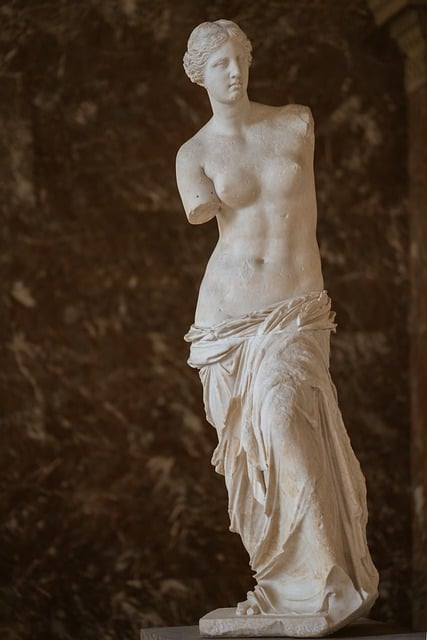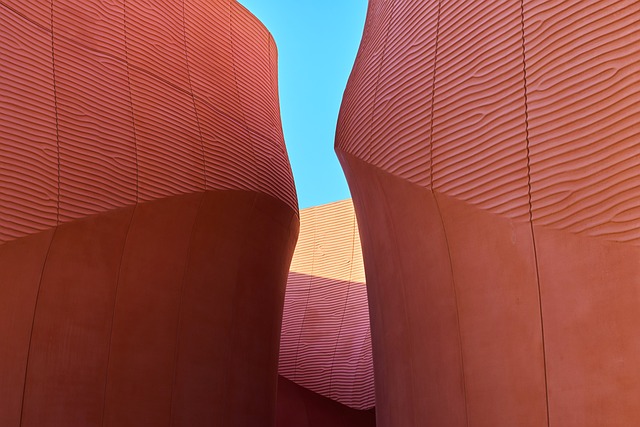The Art of Immersion: Crafting Your Ideal Museum Experience
Museums are more than just repositories of artifacts and art; they are gateways to the past, windows into diverse cultures, and reflections of human creativity. Each visit can be a deeply personal and immersive journey, teeming with opportunities for learning and discovery. However, the true magic of a museum experience often hinges on how we engage with the exhibits. This article delves into the art of immersion in museums, offering insights and strategies on how to enhance your visit and create a memorable experience.
Understanding the Concept of Immersion
Immersion in a museum setting goes beyond merely walking through galleries and observing items behind glass cases. It involves activating all your senses, engaging intellectually and emotionally with the exhibits, and allowing the stories behind the artifacts to resonate within you. This state of being fully absorbed can transform a standard tour into an enlightening experience filled with personal insights and reflections.
To achieve this level of immersion, one must cultivate both an open mind and a curiosity for learning. Recognizing that every artifact has a story to tell can ignite a spark of enthusiasm in even the most seasoned museum-goer. By approaching your visit with a focus on deeper engagement—through observation, interaction, and reflection—you can unlock a new dimension of appreciation for the art and history presented before you.
Preparation: Setting the Stage for Your Visit
Before embarking on your museum adventure, consider dedicating some time to preparation. Much like attending a concert or theater show, having an understanding of what to expect can significantly enhance your overall experience.
One effective strategy is to research the museum’s current exhibits and collections in advance. Many museums offer online resources, including virtual tours and descriptions of their holdings, allowing you to pinpoint areas of interest. Take notes on specific exhibits or artists that intrigue you, and if time allows, explore the museum’s history as well. Understanding the context and significance of what you will see can deepen your sense of connection to the experience.
Consider your goals for the visit. Are you looking to learn about a particular time period, or are you simply hoping to be inspired by beautiful works of art? Setting intentions can provide direction and focus, amplifying your engagement with the artifacts.
The Journey Begins: Arrival and First Impressions
Upon arrival at the museum, allow yourself time to soak in the surroundings. The architecture, the layout, and even the ambiance contribute to the overall experience. Before diving into the exhibits, take a moment to appreciate the space itself. Is it modern and sleek, or historic and ornate? Note the atmosphere and the feelings it evokes. This initial impression can set the tone for your entire visit.
Once inside, take a few minutes to explore the museum’s map or information desk. Familiarizing yourself with the layout can help you navigate through the exhibits more effectively. Don’t hesitate to ask the staff for recommendations or guidance; they are often passionate about the museum and can offer valuable insights that enhance your visit.
Engaging with Exhibits: An Immersive Approach
As you delve into the exhibits, remember that immersion requires active participation. Instead of merely looking at each piece, engage with it. Allow your curiosity to lead you as you examine artworks or artifacts closely. Observe the colors, textures, and details that might initially go unnoticed. Imagine the stories these pieces could tell, and contemplate the lives of the individuals who created or utilized them.
Many museums incorporate interactive displays, multimedia presentations, and guided tours to enrich the visitor experience. Take advantage of these resources. Engaging with technology—such as augmented reality features or guided audio devices—can provide context and depth, enhancing your understanding of the exhibits. Additionally, participate in hands-on activities or workshops if available. These experiences can provide unique insights and deepen your connection to the material on display.
Another way to increase immersion is by actively seeking out connections between different exhibits. Consider the broader themes that resonate throughout the collection. Perhaps a historical event sparked a revolution in artistic expression, or certain cultural practices have evolved over time. Connecting the dots encourages critical thinking and fosters a more profound appreciation for the interconnectedness of human experiences.
The Power of Reflection: Taking a Step Back
As you navigate through the museum, create intentional pauses for reflection. After viewing an exhibit or a particularly striking piece, take a moment to step back and absorb what you’ve seen. What emotions surfaced during your visit? Which pieces resonated with you the most, and why? Reflection allows you to process your thoughts and feelings, transforming visual experiences into lasting memories.
Consider keeping a museum journal or even a simple notepad to jot down thoughts, sketches, or feelings inspired by the exhibits. Documenting your impressions can enhance retention and provide a personal keepsake of your experience. This practice encourages deeper analysis and enables you to engage with the art on a more intimate level.
Communal Experience: Engaging with Others
Museums are communal spaces where individuals share knowledge and perspectives. Engaging with fellow museum-goers can enrich your experience, sparking conversations and insights that you might not have considered alone. Bring along friends or family to share thoughts and interpretations, or engage in conversation with other visitors who show interest in the same exhibits.
Participating in guided group tours can also foster a sense of community. Expert guides often provide fascinating backstories, historical context, and interpretations that can offer new perspectives. Listening to diverse viewpoints can open new lines of inquiry and inspire thought-provoking discussions.
Embracing Diversity: Exploring Different Perspectives
One of the remarkable aspects of museums is their ability to showcase a myriad of cultures, experiences, and narratives from across time. Embrace opportunities to engage with diverse perspectives as you explore the exhibits. Many museums aim to represent voices that have been historically marginalized, providing a platform for understanding complex social issues and cultural nuances.
By allowing yourself to be open to stories that may be unfamiliar or challenging, you can cultivate empathy and a greater appreciation for the world’s rich tapestry of experiences. This empathetic engagement can profoundly shape your personal outlook and understanding of humanity as a whole.
The Role of Emotion: Connecting on a Deep Level
Art has the unique ability to evoke emotions and provoke thought, making it an invaluable tool for fostering connection. As you engage with various pieces, pay attention to how they make you feel. Whether it be joy, sadness, nostalgia, or inspiration, recognizing and allowing these emotions to surface can lead to a deeper, more immersive experience.
Consider why some pieces resonate more than others. Is it the story behind the work, the aesthetic quality, or the medium used? Reflecting on the emotional responses elicited by each piece can help you grasp the significance of the artist’s intent and the cultural context in which the work was created.
Conclusion: A Lasting Impact
The experience of immersing yourself in a museum goes beyond mere observation; it’s about connection—both with the art and with oneself. By approaching each visit with intentionality and openness, you transform the mundane into the extraordinary. The art of immersion allows you not only to marvel at the artifacts but also to engage deeply with the stories, cultures, and emotions they encapsulate.
As you leave the museum, take a moment to reflect on the impact of your visit. What insights have you gained? Which stories will linger in your mind? By nurturing a habit of reviewing your experience, you can carry the lessons learned into your everyday life, making art and culture ever-present companions in your journey of exploration and learning.
Immersing yourself in a museum experience is an invitation to delve into the richness of humanity’s shared history, creativity, and diversity. As you fine-tune your approach, you will find the myriad ways in which art can inform, inspire, and transform you long after your visit has ended.


